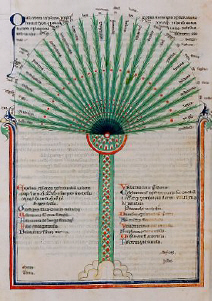LECTURES II, III THE THIRD CENTURY
Plotinus is the one great genius in an age singularly barren of greatness. It was a dismal and pessimistic age, when civilisation seemed to be stricken with mortal sickness. And though Plotinus deliberately detaches himself from current affairs, the great man always gives voice to the deepest thought of his own time, and cannot be understood apart from his historical setting.
A blight had fallen upon the Greek and Roman stocks, and the Empire was full of Orientals and Germans. This change of population profoundly affected the social life, the morals, and the religion of the Empire. Except in law, religion, and religious philosophy there was stagnation or retrogression everywhere.
The revival of the religious sentiments was strongly marked. Toleration and fusion of cults were general; only atheism and impiety were frowned upon. The old Gods were again honoured ; but the religions of the East were far more potent. These came chiefly from four countries — Egypt, Syria, Phrygia, and Palestine. Characteristics of the worship of Isis, Cybele and Attis, Mithra.
The new syncretism (theokrasia) differed widely from the old polytheism. It was now the fashion to worship one God with many names. The deity, says Themistius, takes pleasure in the diversity of homage. Paganism had no dogma and no church. It tolerated Lucian, who made few disciples, and persecuted the Christians, who made many. But the real rivals of Christianity were the Eastern cults, not the official paganism, the object of the rhetorical polemic of the Fathers. The real enemy was ignored, not attacked, by controversalists on both sides. The Christians hardly mention Mithra; Plotinus leaves the Christians severely alone.
There was a great revival oi superstition, especially of magic, white and black, and of astrology, which was called the queen of the sciences. We probably underestimate greatly the pernicious influences of these pseudo-sciences in the last age of pagan antiquity. Christianity deserves credit for reducing a permanent nightmare of the spirit to a discredited and slowly dying superstition.
Eschatology is always vague and contradictory, and it is most difficult to discover what was really believed in a past age. But it is clear that belief in immortality was much stronger in the third century than in the first. The Orphic and Neopythagorean faith in the essential Imperishableness of the soul was quite independent of spiritualistic superstitions, and the Oriental cults owed much of their attractiveness to their definite promises of a future life. The revival of the mysteries was not unconnected with the same tendency.
Judaism could not offer this particular attraction ; and in our period it was returning to its former exclusiveness, and was relapsing into an Oriental religion.
Meanwhile, Christianity was developing rapidly into a syncretistic European religion, which challenged the other religions of the Empire on their own ground. A great change came over the Christian Church between Marcus Aurelius and Decius. In the second century the Christians appeared to their neighbours a tenebrosa et lucijugax natiu; they were heartily despised, but hated only by the mob. But in the third century they attracted many nobles and able professional men ; in Origen they could boast of the most learned man of his generation. The silence of Plotinus is not due to ignorance. He attacks at length the half-Christian Gnostics, who seemed to travesty his own doctrines ; with the school of Origen he could not have much to quarrel about; and Roman churchmanship, already practical and political, would not claim his attention as a philosopher. He left it to Porphyry to assail Christian orthodoxy. The real quarrel between Neoplatonism and Christianity lay in their different attitudes towards the old culture, and towards the Roman Empire. Origen and Plotinus might exchange compliments ; but Minucius Felix calls Socrates scurra Atticus, and Cyprian speaks of the pagans as ‘dogs and swine.’ The pagans retorted by calling the Christians ‘insolent barbarians.’ The struggle was between two political traditions.
The moral reformation was not less conspicuous than the religious revival. Besides the growth of asceticism, we note the emergence of the clerical profession, the private chaplain, the sermon, and the pious tract. Civic virtue declined ; sexual purity and humanity increased. The Catholic type of piety was establishing itself.
